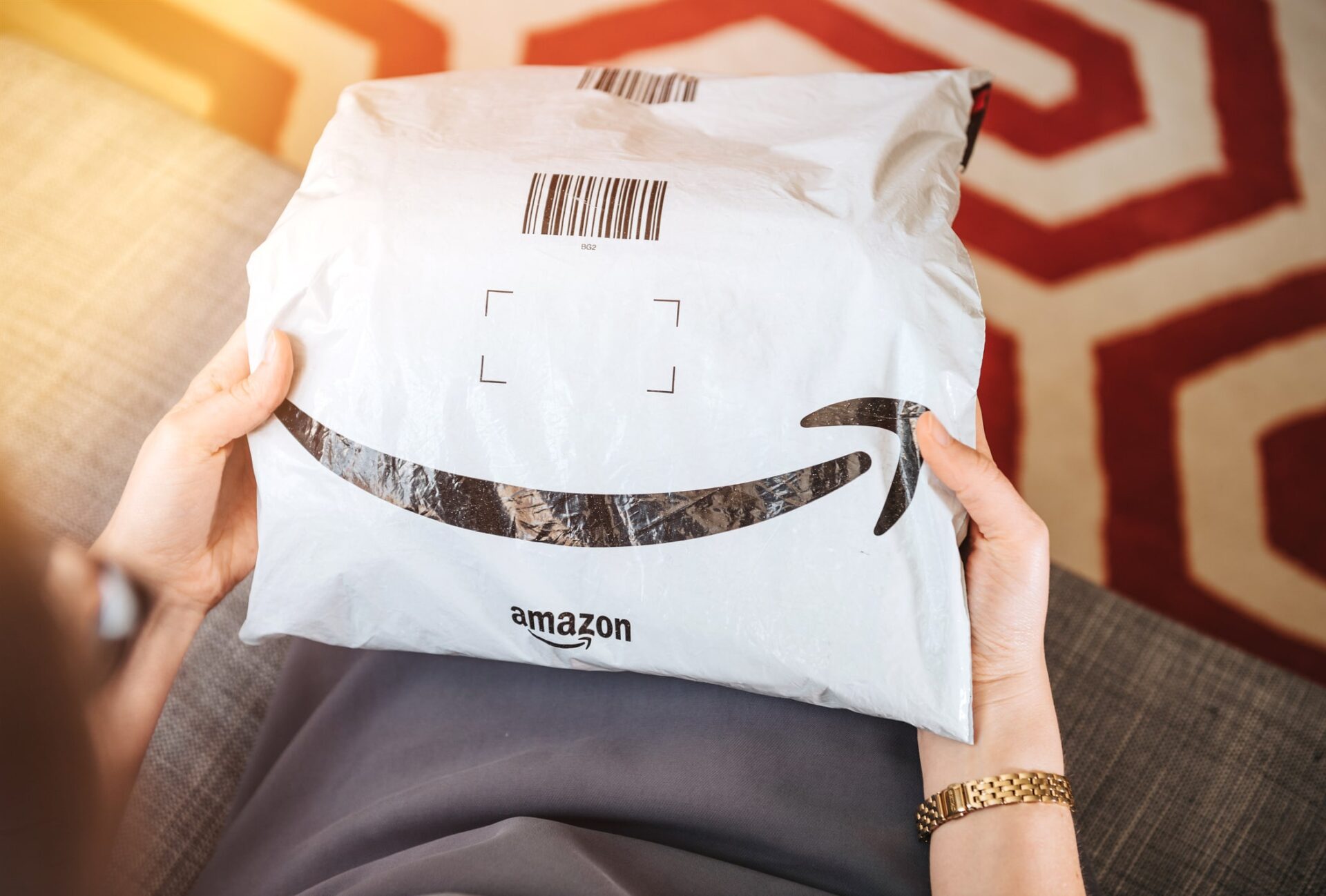
My name is Monica, and I have over 25 years of experience in the retail industry, specializing in buying for brick-and-mortar stores. However, my career took a turn when I ventured into online sales and merchandising. During the COVID-19 pandemic, while homeschooling my children, I decided to explore the possibility of creating my brand. In January 2021, I made my first sale on Amazon, marking the beginning of my entrepreneurial journey.
Generating a monthly revenue of $10,000 through private selling has been a significant achievement for me. Approximately 95% of my sales come from private-label products, although I have also started exploring opportunities in wholesale. My primary focus is the US market, but I have also expanded my reach to Canada, Australia, and the United Kingdom.
By creating your own branded products and selling them on Amazon, you can leverage the platform’s vast audience and fast shipping services to help grow your business. I’m here to share a guide to help you get started with your private label business, along with some insights from my journey.
Research Your Niche and Product Idea
First of all, product research is a crucial step in starting any successful Amazon private label business. Finding a niche or product idea that is both in demand and profitable is key when it comes to standing out in the market.
Here are some effective strategies for conducting effective product research:
- Analyze market trends: Stay up-to-date on current market trends and consumer preferences. Look for emerging product categories or untapped niches where there is potential for growth.
- Identify gaps in the market: Research existing product categories and identify any gaps or areas with limited competition. These gaps indicate potential opportunities to introduce a new or improved product.
- Customer reviews and feedback: Analyze customer reviews and feedback for existing products in your target market. Look for common pain points or areas for improvement that you can address with your product.
- Consider your area of expertise or passion: Choose a niche or product idea that aligns with your expertise or passion. Having knowledge or interest in a specific area can give you a competitive advantage and help connect more effectively with your target audience.
- Evaluate Profitability: Assess the potential profitability of your chosen product idea. Calculate production costs, pricing, and profit margins to ensure it is financially viable.
Remember, finding a unique product idea or improving upon existing products can help you differentiate yourself in the market and attract customers. By investing time and effort into thorough product research, you can increase the chances of finding a profitable niche or product idea for your private label business.
How to Choose Your Niche?
In terms of product offerings, my focus lies in the Home & Garden category. The decision to sell gardening products was influenced by several factors. Firstly, these items appeared to have great potential for success, particularly when considering the opportunity to enhance each item’s photos and listings. Instead of merely relying on existing content, I wanted to create a unique selling proposition by improving the visual presentation and product descriptions.
Although I did not initially intend to focus exclusively on a specific niche, the gardening products I encountered during my research stood out as promising candidates for my private-label business. Following are the factors that I considered while assessing the niche and specific product category for entering the market:
- BSR (Best Sellers Rank) indicates actual sales performance.
- Price point, with a minimum threshold of $29.99 to ensure profitability.
- Profit per item, aiming for at least $5 per item sold.
- Evaluation of competing offerings for the same product to avoid saturation.
- Potential for price improvement, listing quality, or product quality.
During the assessment phase, these metrics and parameters played a crucial role in determining whether a particular niche or category was viable for entry. The BSR served as an indicator of the product’s selling potential, while the price point and profit per item were key considerations to ensure profitability. Assessing the competition and the number of similar product offerings was important to help me avoid entering an oversaturated market.
Moreover, I specifically sought opportunities where I could make improvements, whether in terms of pricing, listing quality, or product quality. Identifying niches with limited offerings and areas for enhancement allowed me to carve out a unique position and value proposition within the market.
Helpful Tools for Sellers
Initially, I relied on minimal tools for product research, primarily utilizing a free BSR tool. However, as I delved deeper into the selling process and began to consider expanding my product range, I realized the importance of utilizing the various tools and resources available on Amazon and platforms like AMZScout.
As I was searching for private label product ideas, I discovered that AMZScout’s features allow you to:
- Evaluate the demand for any niche by showing product sales trends.
- Track each product’s price changes over time.
- Analyze the listing quality of competitors in the niche.
- Calculate FBA fees and potential profits for preferable products.

One of AMZScout’s tools that I discovered assists with keyword research. I came across a tutorial video that provided a comprehensive overview of the tool’s features, and while I recognize the value it brings, I believe I am yet to unlock its full potential. Regardless of your chosen business model—whether it’s private label, wholesale, or retail arbitrage—incorporating software tools can greatly boost your operations and increase overall success.
Develop Your Brand Identity
Developing your brand identity as a private label seller on Amazon is essential for building customer trust, establishing a strong presence, and standing out from competitors. Here is a general overview of the process along with five steps to help you develop your brand identity:
- Create a Compelling Brand Name and Logo: Choose a brand name that is memorable, relevant to your products, and resonates with your target audience. Design a visually appealing and professional logo that represents your brand’s values and sets it apart from competitors.
- Create Your Product Design and Packaging Design: Develop a unique and attractive product design that stands out in Amazon’s crowded marketplace. Consider the functionality, aesthetics, and target audience preferences while ensuring your design aligns with your brand identity. Additionally, create appealing packaging that enhances the customer’s unboxing experience and communicates your brand’s quality and value.
- Register Your Brand: By registering your brand through Amazon’s Brand Registry program, you gain the benefits of being the sole seller of your products. This means you have the exclusive rights to list and sell your branded items, eliminating competition for the Buy Box. With brand registration, you can establish a stronger presence and maintain greater control over your product listings, pricing, and customer experience.
- Consider Adding Unique Barcodes: For a new product, you’ll need to generate and assign unique barcodes, such as UPC or EAN codes. This ensures accurate inventory management, seamless order processing, and compliance with Amazon’s requirements. Unique barcodes also help protect your brand from counterfeit products.
- Create High-Quality Product Photos: Invest in professional product photography to showcase your products in the best possible light. High-quality images attract customers and build trust, increasing the likelihood of conversions. Ensure your product photos accurately represent the features, details, and quality of your products.
By following these steps, you can create a strong brand identity on Amazon that captures the attention of potential customers and establishes credibility and trust. Each of these steps enhances your brand’s overall image and helps differentiate your products in a competitive marketplace.
Once I found the right product, developing my brand involved a series of strategic steps that I learned through trial and error. A key moment was when my son enthusiastically joined me in brainstorming the perfect brand name and logo. We spent hours together, bouncing ideas off each other, and his fresh perspective and creativity brought a unique touch to the process.
Then, I proceeded to form my company and legally registered my brand. This involved completing the necessary paperwork and fulfilling the requirements set by the United States Patent and Trademark Office (USPTO). Brand registration offers legal protection, establishes credibility, and allows me to confidently promote and sell my products as a recognized and authorized brand.
Source a Supplier
When it comes to sourcing a supplier for your product, I’ve found that suppliers are fairly easy to find by conducting online research and opening accounts with them. However, finding a good deal can be more challenging. Many times, suppliers either don’t sell to third-party sellers, or their prices are too high, making it difficult to generate a profit on Amazon.
When searching for a supplier for my private-label products, I took a targeted approach to find manufacturers who also specialized in producing gardening-related items. I explored their websites, reviewed their product catalogs, and contacted them directly to inquire about private label opportunities. This allowed me to establish connections with suppliers who had the expertise and experience in manufacturing gardening products, ensuring a seamless partnership for my private-label brand.
Some helpful methods you can use to find suppliers include:
- Utilize Alibaba: This platform offers a wide range of suppliers from various industries. Take advantage of their advanced search filters, read supplier profiles thoroughly, and communicate directly with potential suppliers to gather all the necessary information.
- Conduct targeted Google searches: Use specific keywords related to your product niche, and add terms like “manufacturer” to your search. Explore the websites and contact information of relevant companies that appear in the search results.
- Explore Private Label Manufacturer Directories: These directories provide curated lists of suppliers who cater specifically to private label sellers. They offer a streamlined and reliable way to discover reputable suppliers in your industry. Research multiple directories and carefully evaluate the listed suppliers to find the best fit for your needs.
It’s important to keep in mind that some suppliers may have high minimum order quantities, which can be a hurdle for small-scale sellers. Therefore, this process requires careful negotiation and persistence to find suppliers who offer competitive pricing, quality products, and manageable order quantities.
Set Up Your Amazon Seller Account
To set up your Amazon seller account, you will need to provide your and your business’s information, including your contact information, payment details, and tax identification number. Amazon will also require you to provide a barcode for your products, which can be obtained from a variety of sources.
Here are a few tips I learned while setting up my Amazon seller account:
- Provide accurate information: Make sure to enter your personal and business details accurately during the account setup. This includes your contact information, payment details, and tax identification number. Double-check everything to avoid any delays or issues.
- List your products: When adding a new product listing on Amazon, ensure that you enter the correct barcodes associated with each item. This helps in accurate product identification and seamless inventory management.
- Understand Amazon’s policies: Take the time to read and understand Amazon’s policies for sellers. Familiarize yourself with their terms of service, selling policies, and product listing requirements. This will help you avoid any potential issues or suspensions down the line.
By following these tips, you can set up your Amazon seller account smoothly and ensure that you’re on the right track to start selling your products effectively.
Set Up Your Product Listing
Creating a listing on Amazon involves several essential steps. These include:
- Gather high-quality product photos and write compelling product descriptions.
- Enter crucial details about your product, such as pricing, shipping information, and product variations.
- Optimize your listing by conducting keyword research and incorporating relevant keywords into your product title, bullet points, and product description.
When it comes to optimizing my listing, I’ve found that keyword research plays a crucial role. Since this process can be time-consuming, I discovered that AMZScout offers keyword research solutions for different products, which has been incredibly helpful. I integrate the researched keywords into my backend keywords and product listing to improve search visibility and attract the right customers to my products.
Set Up Your Payments and Tax Information
As you venture into becoming an Amazon private label seller, setting up your payments and tax information is a crucial step. This process is essential in ensuring that the financial aspect of your business runs smoothly. When setting up your payment information, you need to connect your Amazon seller account to your bank account or any other payment account that can receive payments.
A great way to simplify this process is by using Doola. Doola is a convenient and efficient payment service that can help you set up your payments and tax information from anywhere in the US. It offers seamless integration with your Amazon seller account, allowing you to receive payments directly into your preferred bank account. With Doola, you can easily manage your finances and track your earnings, making the payment process hassle-free.
Monitor Your Product Performance
I rely on various tools provided by Amazon to monitor and assess the performance of my business. One of the key tools I use is the Amazon Seller Central dashboard, which provides valuable insights into my sales, order metrics, and customer feedback. It allows me to track important data such as my sales volume, revenue, and inventory levels, giving me a clear overview of my business performance.
Launch Marketing and Advertising Campaigns
One of the effective ways I choose to advertise my products is through Amazon Sponsored Products. However, due to the intensive nature of PPC research, I decided to outsource this aspect of my advertising campaign. I worked with an experienced professional who specializes in PPC research and optimization. She conducts in-depth keyword research, analyzes market trends, and fine-tunes my bidding strategies to maximize the performance of my campaigns. This frees up my time to focus on other important aspects of my business.
In terms of tracking keyword performance, I rely on the AMZScout keyword tracker. This tool allows me to monitor the performance of the keywords I’m targeting in my advertising campaigns. Insights from the extension help me assess the effectiveness of my chosen keywords and make data-driven decisions to optimize my campaigns further.
Utilize Amazon FBA (Fulfillment by Amazon)
As a private label seller, utilizing Fulfillment by Amazon (FBA) comes with numerous benefits. This program allows sellers to take advantage of Amazon’s robust logistics and distribution network, providing hassle-free order fulfillment and reliable shipping to customers. Additionally, FBA provides exceptional customer service, including handling returns and managing inquiries, which helps maintain customer satisfaction and build trust in the brand.
You’ll need to enroll in the FBA program, prepare your products for shipment to Amazon’s fulfillment centers, and create your product listings with the FBA option selected. One essential tip for utilizing FBA effectively is proper inventory management. Sellers should closely monitor their inventory levels to ensure an uninterrupted supply and prevent stockouts. By regularly assessing sales velocity and adjusting inventory accordingly, sellers can meet customer demand and avoid potential sales losses.
Monitor Your Competition
Monitoring your competition level is crucial for success as an Amazon private label seller. By regularly assessing the offerings of similar products on the platform, I can identify opportunities to differentiate my products and stand out in the market. This involves analyzing factors such as product features, pricing strategies, customer reviews, and branding efforts.
Through careful observation and analysis, I can make informed decisions on how to position my products effectively and stay ahead of the competition. This also helps me identify emerging trends and adapt my strategies to stay relevant in the ever-changing Amazon marketplace.
Final Advice
Looking back, I realize that starting slowly and carefully would have been beneficial for my growth. Although I was eager to scale my business quickly, taking the time to learn and make improvements along the way would have been more fruitful in the long run. My best piece of advice is to begin with one product, go through the entire process, and carefully evaluate what you might have been able to do better. This approach allows for a more intentional and strategic expansion of your business. Remember, success is not solely measured by rapid scaling, but by continuous improvement and intentional growth.
If you’re looking for support and guidance with setting up your payments and taxes, check out doola’s services. With doola, you can streamline your operations, access valuable resources, and receive expert assistance to help you navigate the complexities of selling on Amazon. Don’t hesitate to leverage their expertise and take your private label business to new heights.
What is a private label seller on Amazon?
An Amazon private label seller is an individual or company that sells products under their own brand or label. Rather than selling existing branded products, private label sellers create their own unique products and market them under their brand name. These sellers typically work with manufacturers or suppliers to produce these products, often with customized packaging and labeling. Private label sellers have the advantage of controlling their brand and product quality, as well as setting their own pricing and marketing strategies on the Amazon platform.
Can I sell private label products on Amazon but as an individual seller?
Yes, you can sell private label products on Amazon as an individual seller. Amazon allows individual sellers to create their own brands and sell products under their own label. As an individual private label seller, you can work with manufacturers or suppliers to create unique products and package them with your own branding. You can then list and sell these products on Amazon’s marketplace, using your brand name and logo.
Is Amazon getting rid of private label sellers?
There is no indication that Amazon is getting rid of private label sellers. Private label items have been a significant part of Amazon’s marketplace, and the platform has actually been expanding its efforts in this area.
Amazon has been actively promoting their private label brands and offering support to private label sellers through programs like Amazon Brand Registry. Private label products provide Amazon with exclusive offerings and allow sellers to differentiate themselves.
However, it’s always recommended to stay up-to-date with the latest news and policies from Amazon to ensure you have the most current information regarding private label selling on the platform.




